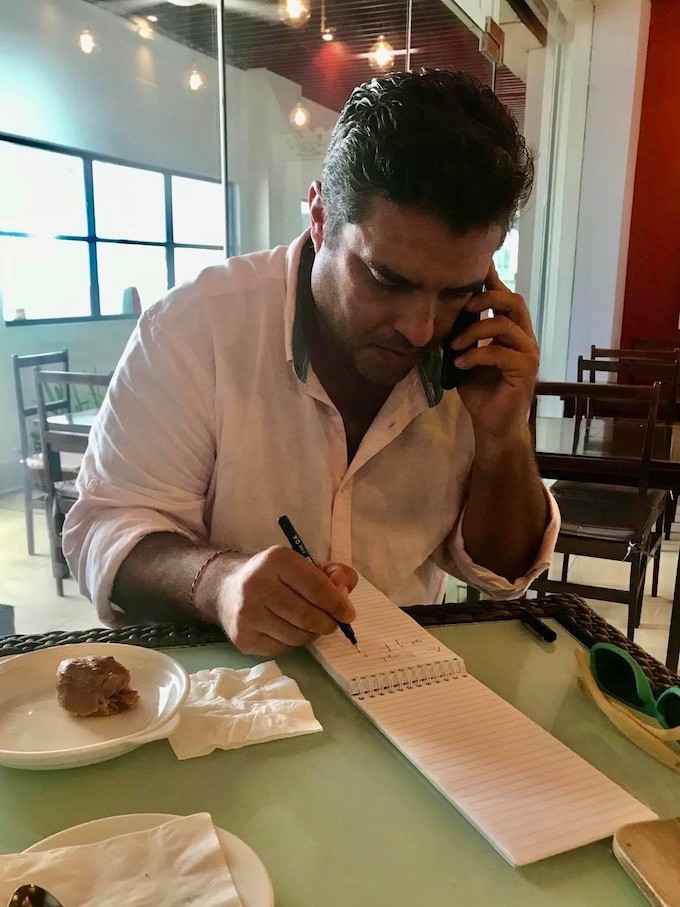
By Bob Howarth
DILI (Asia Pacific Report/Pacific Media Watch): With the rapid spread of the dreaded Covid-19 coronavirus pandemic across the Pacific and Asia many people naturally seek online assurance and news they can trust.
Facebook has seen a nuclear explosion of posts and misinformation, especially in countries like Papua New Guinea and Indonesia.
In PNG’s case the flow of quality information slowed with the lone foreign correspondent in Port Moresby, Natalie Whiting, recalled “temporarily” by the ABC although competent local journalists are striving to fill her shoes.
The small nation of Timor-Leste (East Timor) was awash with foreign correspondents during the bloody period from 1999 to 2002 when it emerged from brutal Indonesian occupation after being invaded in 1975 after the Portuguese colonial empire collapsed.
This sparked the first wave of bloodshed and violence that claimed 200,000 lives. It gained independence in 2002 under UN supervision and life has improved significantly for its current 1.5 million citizens, most still living in villages.
Through all this turmoil one Timor-based foreign correspondent, Antonio Sampaio, continues to play an outstanding role in providing timely and accurate information reporting for the Portuguese newsagency Lusa.
So timely and accurate, I was told by some local journalists earlier this month, they were positively envious. Too many scoops,
Fact check training
I met Antonio this month for a 45-minute session of fine Timorese coffee and Portuguese snacks at his favourite haunt in the gleaming new 6-storey Timor Plaza in the capital Dili. I had been in the country running fact check training for Timorese colleagues.
During our conversation his phone rang four times. Tips from high-ranking Timorese on the ongoing political crisis before the first confirmed case of Covid-19 set the cat among the pigeons.
Sampaio apologised for the phone interruptions but agreed when I suggested his endless scoops were the result of accurate, balanced reporting and a high level of trust.
His CV, when he was honoured by Timor-Leste, is impressive.
“Antonio Sampaio been covering Timor-Leste since the end of 1990, having written thousands of news stories about the situation in the territory. He wrote about Timor-Leste for Lusa, Diário de Notícias, Publico, Expresso, Jornal de Notícias and most of the Portuguese written press.
“He followed the situation in Timor-Leste for RTP, TVI, RDP, Radio Renaissance and Radio Nova. In Australia he reported on the situation in Timor-Leste during the Indonesian occupation in the newspapers of the group News Limited, including The Australian, on SBS radio and television, including with reports on the Indonesian campaign in which the massacre of Santa Cruz on 12 November 1991 occurred.
“The work in the period earned him the Correspondents Prize in Portugal in 1991 when he was 20 years old. In 1994/1995 he won two journalism awards in Portugal, the Gazeta Prize and the Press Club Award for a television documentary on oppression during the Suharto regime in Indonesia.
First permanent foreign journalist
“He arrived in Timor-Leste in March 1999 and was the first permanent foreign journalist based in the territory – as a bureau chief for Lusa agency – until 2004.
“He opened Lusa’s first delegation in Timor-Leste and despite been placed elsewhere (Geneva and Spain) he continued to be asked to help at times of crises, such as 2006 and 2008. He returned as a bureau chief to Timor in 2014. In 2019 he was awarded the Medal of the Order of Timor-Leste. He continues to write daily with an extensive coverage of Timor-Leste.”
Yes indeed. We discussed a common link. A dual citizen, he was born in Portugal and emigrated to Australia in 1987.
First job was a copyboy on The Australian newspaper in Sydney. Sampaio wrote page one reports on the 1991 Santa Cruz massacre by Indonesian troops of protesting students in the now infamous Santa Cruz cemetery in Dili.
In my case, I started much earlier than him as a second year cadet journalist on The Australian’s Brisbane bureau (I was half the bureau).
Today Lusa. the official Tatoli news agency, TempoTimor and the Timor Post are the most popular news sources in the country while all of them provide a limited English service.
Facebook followers
In my case lately I’ve posted on Facebook (420,000 FB followers locally) a lot on Timor-Leste after my 38th trip to the wonderful country (since my first trip to help launch the first daily Timor Post in February 2000 with computers and other equipment donated by News Limited, Reuters and Fairfax).
Timor’s lone ranger correspondent has corrected me on more than one occasion for errors (not deliberate) in my Google Translation of various reports during the ongoing Covid-19 case confirmation.
I unashamedly join Antonio Sampaio in a chorus hoisting a local cold Bintang beer: Viva Timor-Leste!
Bob Howarth is a veteran journalist with a career that spans working in Australia (Fairfax, News Limited), London (The Times), Hong Kong (South China Morning Post) and as managing director and publisher of the PNG Post-Courier daily. He is currently country correspondent for Reporters Sans Frontières (Paris) and media training adviser to the Timor-Leste Press Council and UNDP Timor-Leste. He is also a research associate with the Pacific Media Centre.



